It’s August, and the Olympics are underway in Paris. A week or two before the games began, the city was still under considerable construction. The $1.5 billion (€1,4 billion) clean-up of the Seine, after daily tests showed it ready, then not-ready, was finally deemed clean enough for the triathlons. A suspicious fire burned some of France’s train tracks, disrupting travel across the country. But the long-awaited opening ceremony, famously held outside rather than in a stadium, which prompted major security concerns and safeguards, went off without a hitch—save for the heavy rain that drenched the city, including the athletes and spectators. We stayed at home to watch the spectacle on TV, feeling better that we didn’t score tickets as the rain pelted outside our window, coming down harder and harder, and we were happy to be on our comfy couch. But it was nice to see athletes from all over the world (including countries that sent only five or six athletes) getting their moment to shine on the global stage in front of millions of people, despite the downpour. Some had their own boats, and smaller teams shared boats. At first, I was waving back, until Romain reminded me that they couldn’t see me. I imagine they couldn’t hear the spectators, and vice versa, being so far apart from each other, and I missed the excitement of seeing the athletes smiling and waving en masse to the roar of the crowd, which happens when the events are held in a stadium. The ceremony continued, with cuts away from the arriving athletes to dancing, singing, and, frankly, a few weird things, presented during the ceremony. The one that stood out the most for us (and others) was the masked, hooded character racing over rooftops and below Paris, carrying the Olympic flame. Despite some who said you needed to be French to get the references, Romain was as baffled by many of them as I was. Neither one of us knew who that was supposed to be. Like others, we expected the mask would be removed when the flame arrived at its destination to kick off the games, with The Big Reveal happening at the end. (There was speculation that it was Tom Cruise.) In the end, they simply walked away, leaving the rest of the world just as perplexed as we were. The next day, we found out who it was or, at least who it was supposed to be:
Um, okay. There was a wall of windows with headless Marie Antoinettes performing together with the French heavy metal band Gojira, which later erupted into strings of fake blood spurting into the Seine. A line-up of Parisian can-can dancers couldn’t. And a French accordion player, wearing a beret and blue-striped T-shirt, squeezed his way through the celebration perched on a bridge over the Seine, in good spirits, despite the rain. Fortunately, they gave the mimes the night off. I’m sure the events were presented differently in the U.S. (in France, the 4+ hour ceremony was shown commercial-free), but we got to see, minute-by-minute, the Olympic torch being passed down through generations of athletes. The torch finally made its way down the Seine on a spectacular, galloping iron horse (sponsored by Sanofi pharmaceuticals), which kept going and going. And going, and going…and going. I assume in the U.S., that’s where they cut to a bunch of commercials, until finally it was passed along to another string of star athletes from over the years, trotting through town, before being handed off—whew!—to hundred-year-old Charles Coste, who won the medal for the evening by waiting in his wheelchair, without an umbrella, and staying up until 11pm. Although, we soon realized that holding an umbrella was a difficult job… I would have liked to have seen Lady Gaga’s number taking place later, so they could shine a spotlight on her after nightfall, in all her feathery glory. (Friends who were positioned behind her weren’t able to hear any of it.) But she gets major points for stopping in at my favorite sandwich shop afterward. Speaking of favorites, perhaps as a reaction to the controversy in France surrounding singer Aya Nakamura performing at the Olympics, she did so, in front of the esteemed Académie Française, surrounded by the normally staid Garde Républicaine band, who, by the end of the song, were getting down with her. 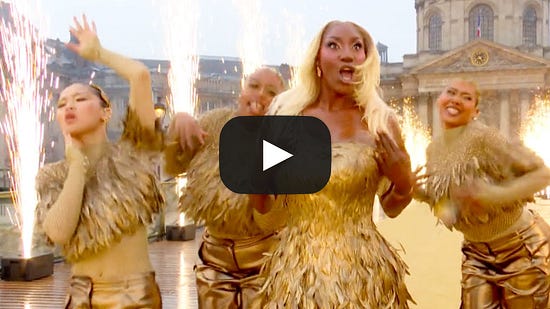 (Video may not be available in certain countries due to international broadcast rights. And I hear ya if you can’t watch it. I had to hunt down pretty hard to find Simone Biles’ and Stephen Nedoroscik’s routines, to watch them outside the U.S.) Toward the end of the four-hour spectacle, Tony Estanguet, the president of the Paris organizing committee, brought everything together with an outstanding speech that was filled with joy, happiness, and heartfelt pride for his country, which has invited athletes to come from around the world to come to France for the Olympics. (You can read his speech here, in English.) He put a cap on years of speculation about how Paris would pull off the games, which a few days later, was no longer a question. It was happening. I was ready to brush my teeth and call it a night when Céline Dion came out to sing. After seeing her have a debilitating seizure in the documentary, about after an attempt to sing in a recording studio, I didn’t know how she was going to pull off singing to millions of people around the world, live. I assumed she’d do a duet with Lady Gaga, or someone perhaps else, who could take over the more challenging parts of whatever song they were going to sing if her voice started failing. But there Céline was, clad in Dior, standing on the edge of the Eiffel Tower with just a pianist by her side, belting out L’Hyme à l’amour. Say what you want about Céline Dion, no one else could have ended the evening better than she did. Wow, what a courageous performance, which I think was something we all needed to see at the end of a long, emotional evening. The next day, everyone had something to say, with folks either loving or not loving the opening ceremonies. Many people were thrilled while others were less enthused, using terms like “unique,” “different,” “unforgettable,” and “hard to beat.” Personally, I wish they’d tightened up things and given some context to what was being presented. There was a lot going on, but I wish there was a clearer line running through it The idea of athletes coming down the Seine was novel, but not sure it was worth all the preparation and security for a few hours of television time, especially when the weather wasn’t showing the Seine at its best. On the other hand, a journalist friend told me that spectators get tired of clapping and cheering during the hours it takes for athletes to enter stadiums, which are condensed for tv. So there’s a lot that we don’t see. The opening ceremonies were hailed by some as audacious and daring, and it had its detractors. But in the end, it’s about the athletes and not about us. And now that the games are underway, it’s great to see them, after all their hard work, squarely in the spotlight. A few interesting reads and reactions to the opening ceremonies and the Olympics:
I was lucky enough to get two tickets to the U.S.A. vs Serbia women’s volleyball semi-finals last night (thanks D!), which began by the American team trouncing the Serbians in the first two sets. They seemed certain to win the match; they just had to win the next set. Then, the game changed. The Serbian team sprang to life, handily beating out the U.S. team by playing the next two sets incredibly well. The match turned into five sets, with the fifth determining the winner. (I brushed up on volleyball rules before the game, which helped.) The packed arena crowd cheered on both teams. There were quite a few American in the crowd, rooting for the U.S. team, with lots of people from around the world cheering everyone on — even if you were rooting for team U.S.A., it was impossible not to break into spontaneous applause when the Serbians scored a well-deserved point, and vice-versa. It’s what the games do best…bring people together to celebrate skill and talent. In the end, it came down to an extremely tight finish and the American team eked out a win. A big round of applause roared through the arena, congratulating both teams on a well-played match. The Olympics are about a lot of things, but the most important part of the games is the celebration of athletes gathering from around the world not just to compete, but to show their prowess to the world, regardless of country of origin. It’s probably a cliché to say that everybody wins at the Olympics, but for all the athletes who’ve come to Paris, it’s a triumph. Coinciding with the Olympics are les vacances, when locals leave for their annual vacations. The city is a lot less-crowded, with a reported 25-40% vacancy rate at hotels, so a lot of small businesses and restaurants got dinged by the drop in tourism. As the annual exodus out of town continues, a heatwave blasted us the last few days, tempered by a thunderstorm this morning, before skies cleared at 9am, returning to bright blue. Nothing is more sacred in France than les vacances, and, traditionally, everything from bakeries to government offices close, or are partially staffed, for a few weeks, as people unwind elsewhere. But not everyone leaves, including us, although we did take a trip to Brittany for ten days, where I barely opened my computer.
It’s a favorite destination for Parisians due to its more temperate weather; we’ve had debilitating heat waves in the last few summers, and buildings and cities weren’t constructed to cope with the heat. So to many, heading to places where the water is 18ºC/64ºF is a relief. Even I’ve changed. For years, I couldn’t jump in the water in Brittany due to the frigid temperatures, of the water and on land. But this year, I dove in every day. Some of it was to burn off all the pastries we were eating. Brittany is known for its buttery treats, and I’ve got a post coming up all about them. We’re still seeing lots of beautiful summer fruits here in Paris, although I haven’t had much time to use them. But I did bring home some green walnuts and peach leaves from Brittany to make peach leaf wine. I’ve been working on book projects, which means dividing my time between the kitchen and the computer. Writing a book or, in my case, two at the same time, means getting all the details right, from metric conversions to which type of cocoa works best, and explaining why, and what to do if you can’t get one over the other, etc., to making—and remaking—recipes up to a dozen times before getting them right (I always say, a cookbook author’s job is to make the mistakes…so you don’t!), all the while, letting your creativity flow, which is the most important part. With so many moving parts, it’s a lot of juggling…and a lot of dishes to wash, especially if you want to get the recipes just right for readers. At least rain isn’t predicted for the rest of the games, although the rest of the month is going to be somewhat unpredictable. The markets start winding down and restaurants put Fermé signs in their windows, to give the staff a break. I’ve got friends in town, and I’m scanning the official website for Olympic tickets now that I’m hooked on the games. We’re going to take some road trips once I get my some writing under my belt, with a few more recipes to test, before we get a rest. -David Links I’m LikingHappy to see The Sweet Life in Paris included in this list of Five Best Books on Paris. (WSJ/possible paywall) What restaurants are open in Paris in August. (Paris by Mouth) Inside “Ice Cream College.” (CNN) Is decaf safe? (NYT/Unlocked) Messy Nessy opens her cabinet of curiosities shop in Paris. (Messy Nessy) I talked to the BBC about the Best Bakeries in Paris. (BBC) How baker Tharshan Selvarajah makes award-winning baguettes for high-end restaurants and the presidential palace in Paris. (Eater/YouTube) Why your clothes are worse now: Fascinating video about how fast fashion is making clothes that are designed to fall apart. (Perfect Union/Instagram video) Bay Area restaurateur, one of the pioneers of how we eat today, Narsai David passes away. (BerkeleySide) Things I LikeOne of the great secrets of Frenchwomen is that some of them keep a bar of chocolate in their purse at all times. At least Romain’s mother did. (That’s the only time I’ve ever looked in a woman’s purse in Paris.) But I know a lot of women really like chocolate in France, and one of my Pilates teachers snacks on bars between classes. Another teacher tells the class that if we drop the block balancing on our feet doing hundreds, a balancing exercise that has you counting to one hundred, we have to give them a chocolate bar, specifying one that’s at least 70% cacao. In French supermarkets, the chocolate bar aisle gives the yogurt selection a run for its money in terms of variety, brands, prices, and flavors. I had never heard of Kaoka chocolate, which I discovered during confinement when I ran out of chocolate. Bakeries are considered essential businesses in France, so they were allowed to remain open, and my local bakery gifted me a few kilos of chocolate, which happened to be Kaoka. A few months later, I noticed a line-up of them at a Biocoop natural food store, one of them featuring éclats de cacao, croquants et caramelisés—sparks of crunchy, caramelized cocoa beans, so I picked one up. French chocolate bars are thinner than their American counterparts, which makes it easier to snap off a slender square. I broke one off and put it in my mouth, the dark chocolate melting as I did, and then, when I bit down, the crunchy-bittersweet cocoa nibs came into play, little sparks of sweet and bitter, and I was hooked. While I’m sure Frenchwomen, and Frenchmen, have more willpower than I do and only eat one square at a time, it’s hard not to finish the bar. But I restrain myself and only have two at a time. Kaoka is a French brand so not sure if it’s available elsewhere. Their store locator only lists locations in France (with 331 in Paris). Lionel Ritchie closes the 1984 Olympics in Los Angeles:  You're currently a free subscriber to David Lebovitz Newsletter. For the full experience, upgrade your subscription. |
Thursday, August 1, 2024
August Newsletter
Subscribe to:
Post Comments (Atom)

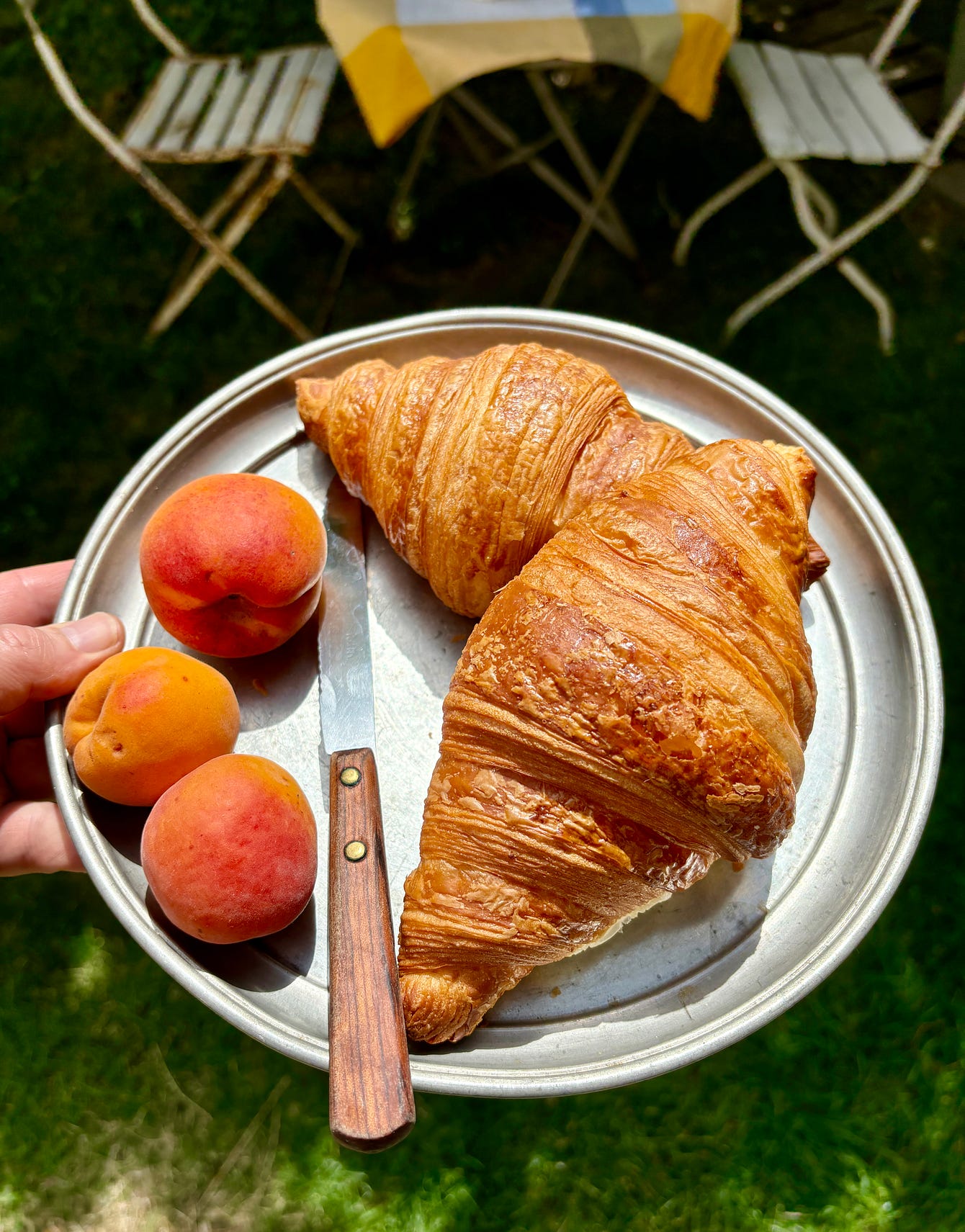

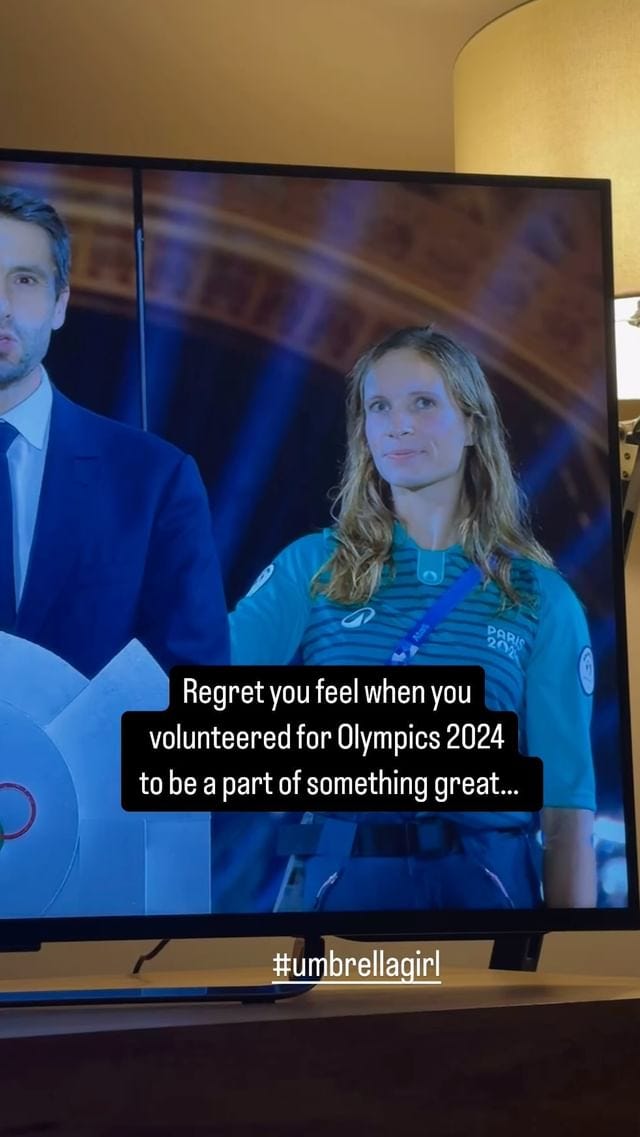

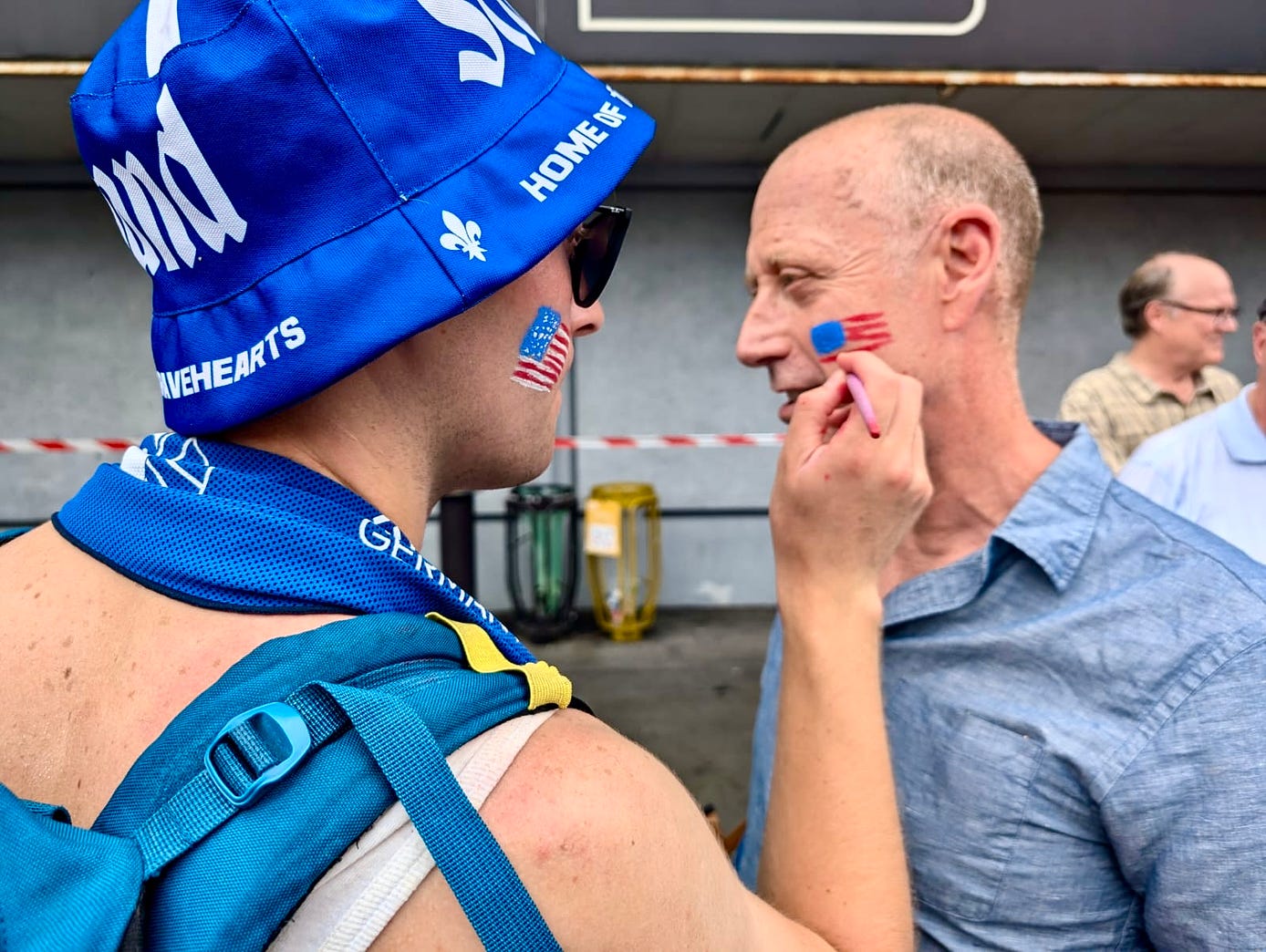

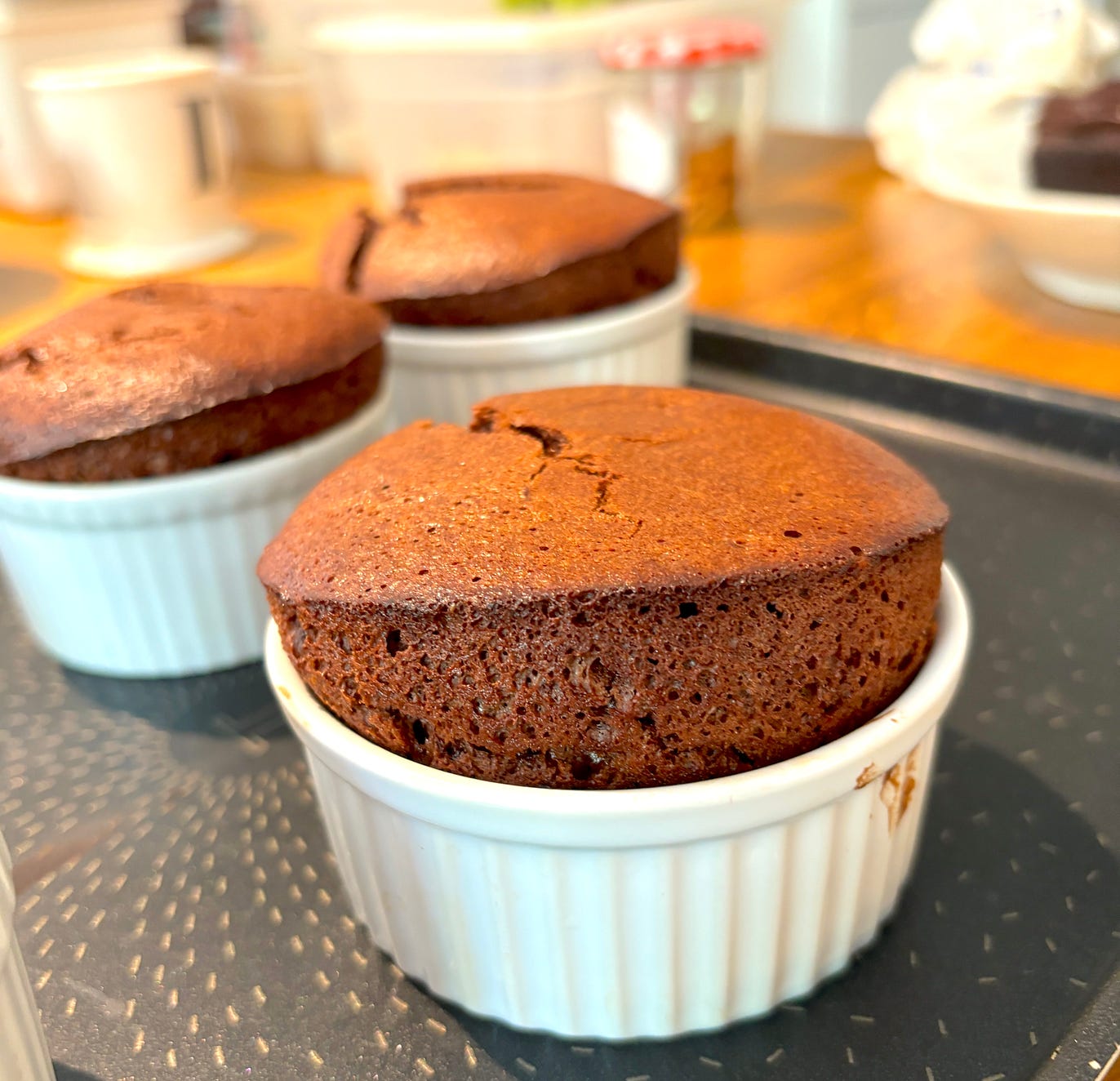
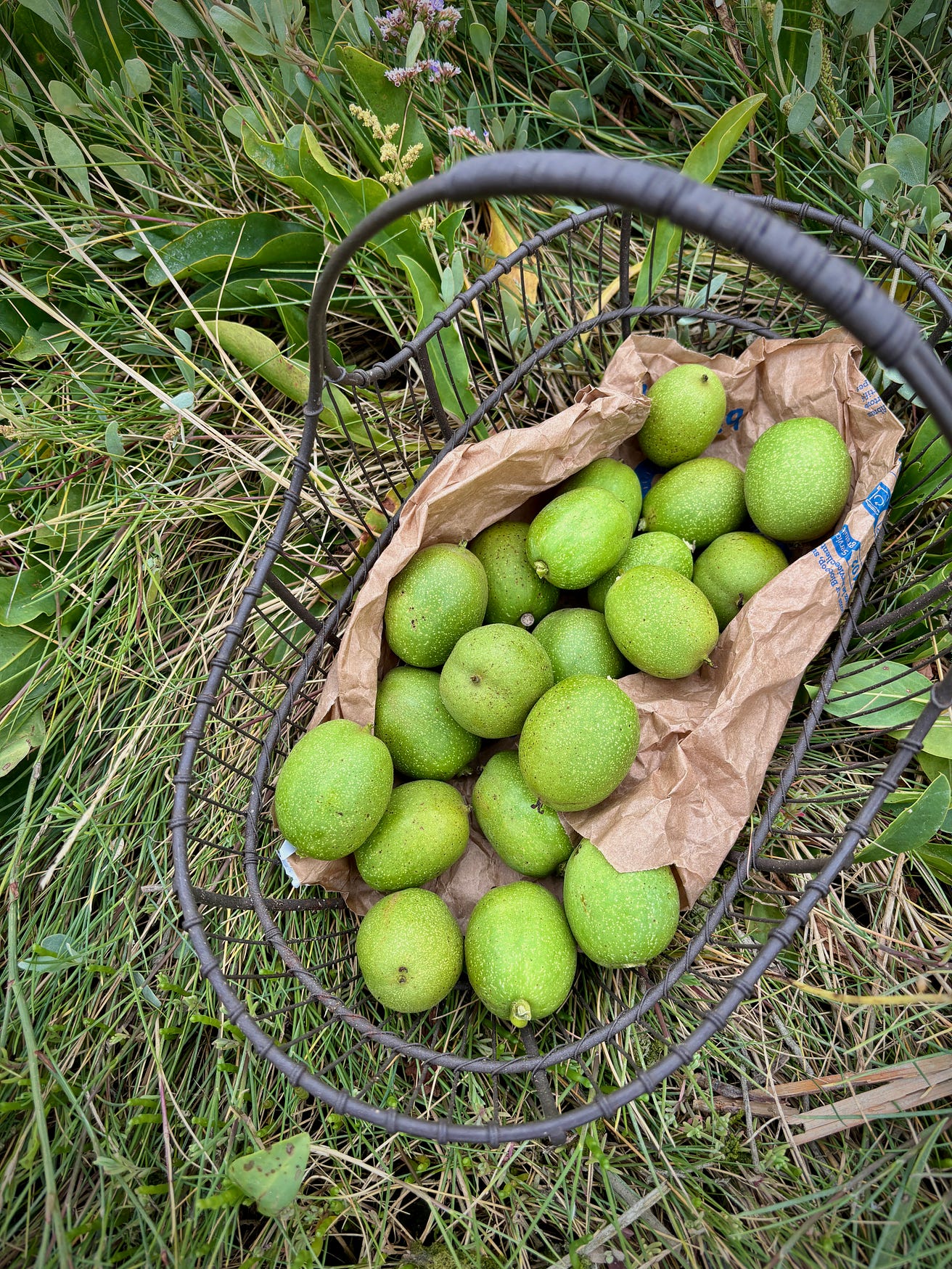
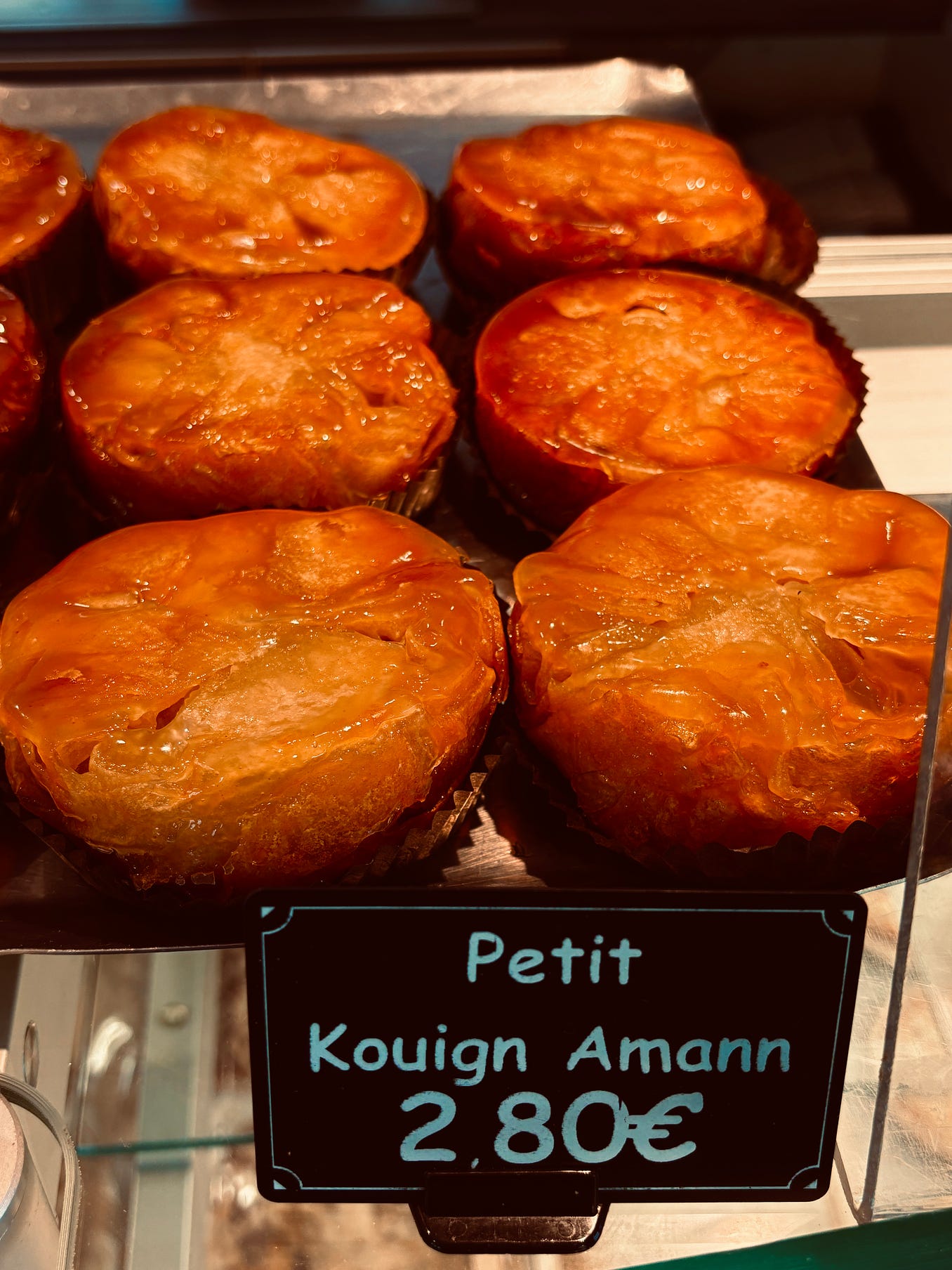
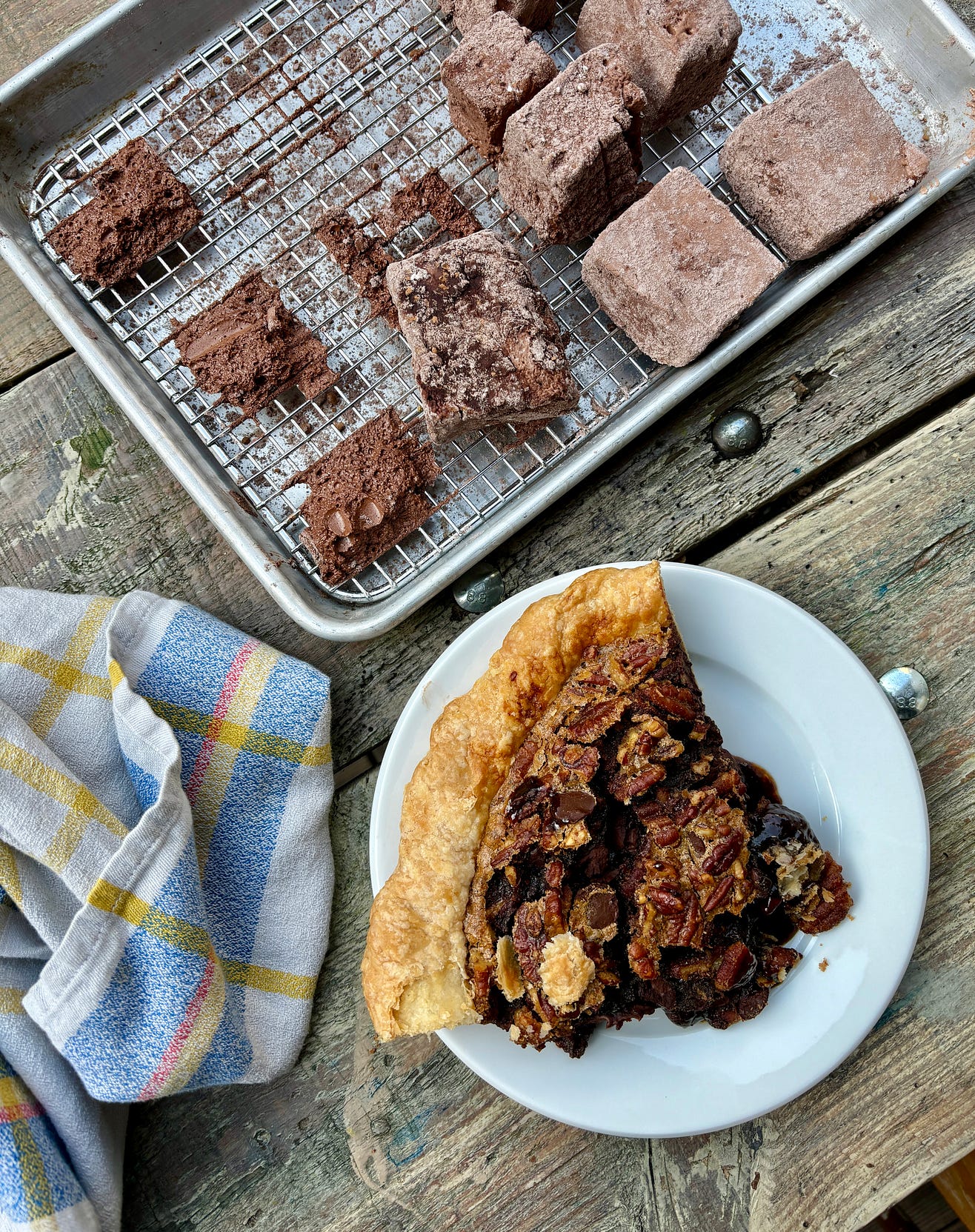
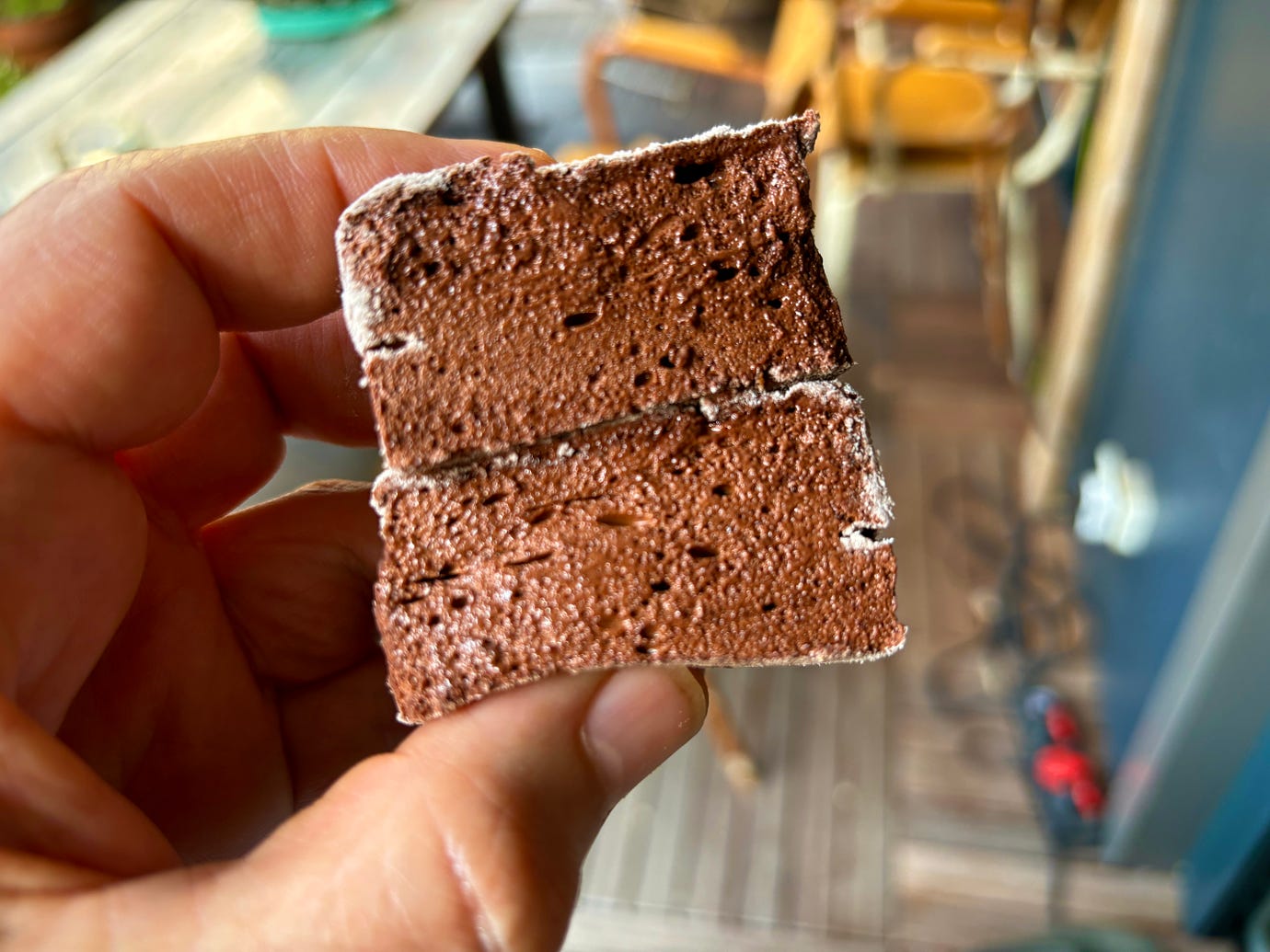


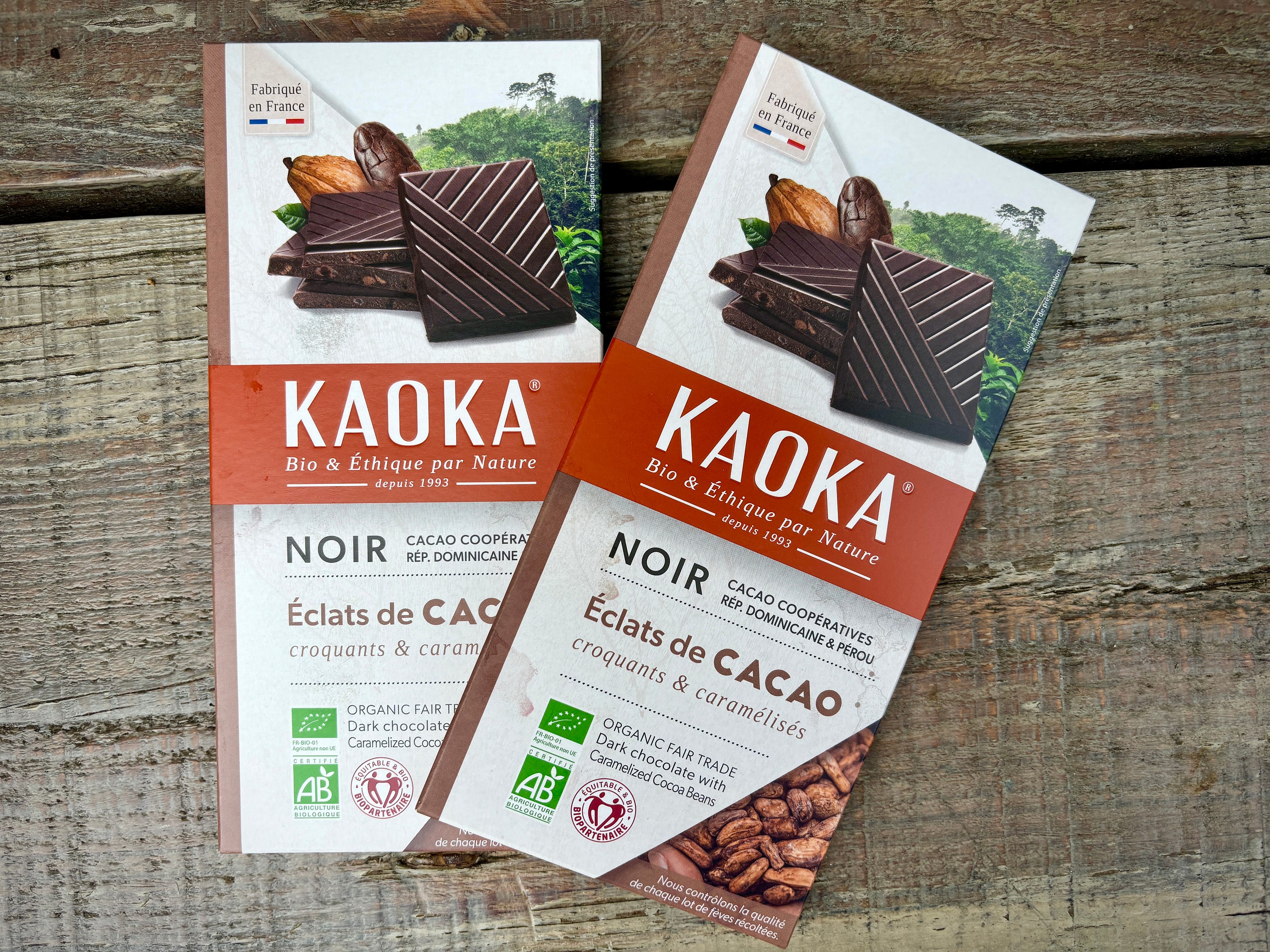
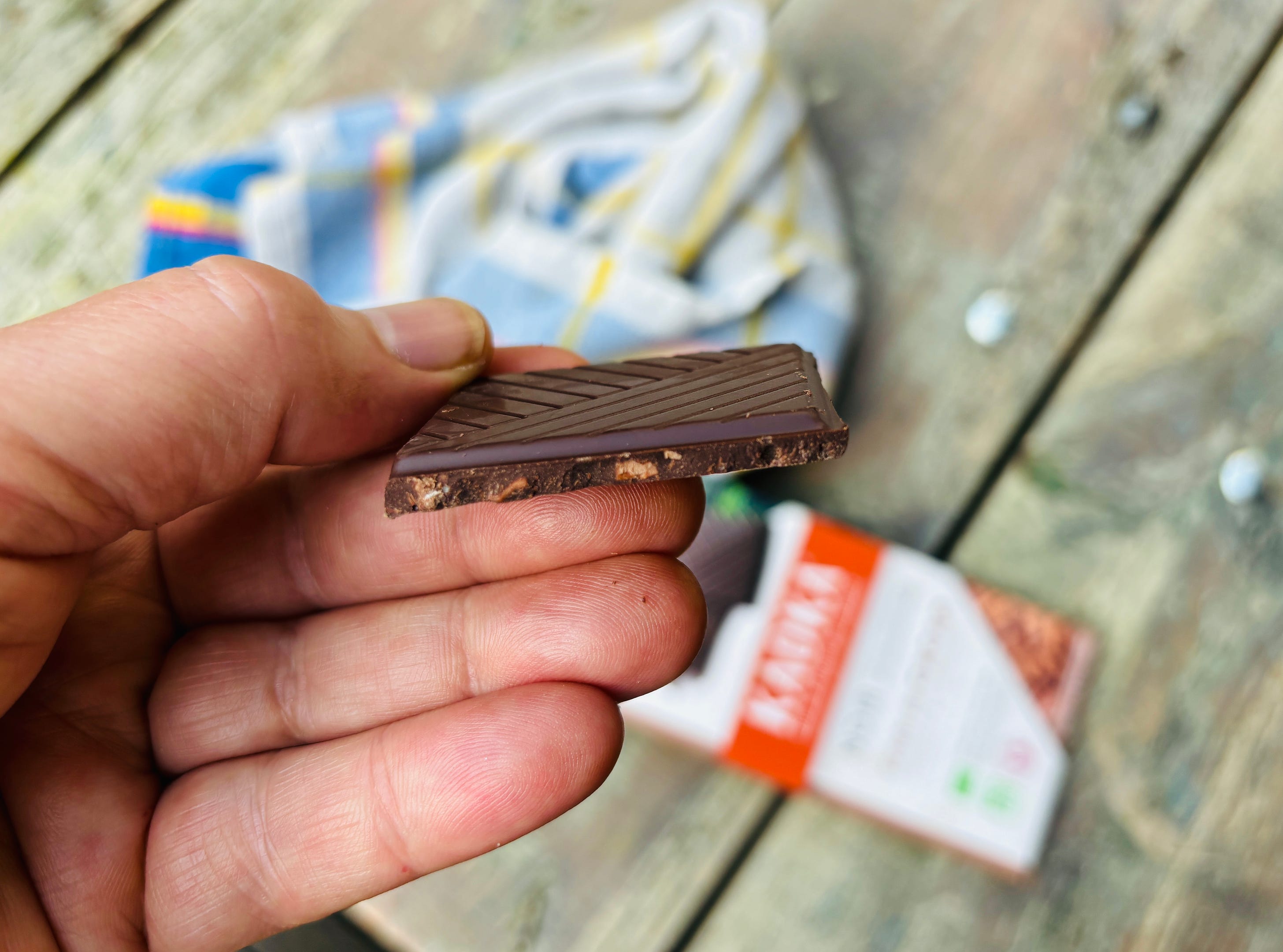

No comments:
Post a Comment